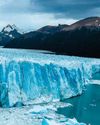Super Volcanoes
How It Works
|Issue 113
The world’s largest and deadliest volcanoes could envelop the whole planet in ash

Supervolcanoes are some of the most destructive natural structures on the planet. Classified only after they have erupted, they eject more than 1,000 cubic kilometres of lava in one go. They’re a thousand times more powerful than a standard volcano and so large that they could blanket the whole Earth in ash.
The ground collapses above them when they explode, and the scars that mark their positions consume so much of the landscape that they become virtually invisible. Yet bubbling pools of magma still seethe below the surface, venting hot steam and gas through the ever-weakening crust above.
Scientists grade volcanic eruptions on a scale of 0 to 8, known as the Volcanic Explosivity Index (VEI). The tiniest volcanoes at the bottom of the scale gently dribble magma, while the behemoths at the top spit out hundreds of tons at a time. There are only around 40 of these supervolcanoes worldwide, but just ten remain potentially active. They sit atop hotspots where magma leaks up from the Earth’s mantle. Bubbles of molten rock accumulate under the ground, building pressure that stretches the Earth at its seams. Between major eruptions, pockets of heat leak out as spurts of lava, water and gas, but eventually the pressure becomes too much. The crust melts and cracks, heaving above the liquid rock below.
When supervolcanoes erupt in earnest the impact is catastrophic. Lava explodes upwards or bursts out in sheets, forming vast splatters and fast-moving lava plains. The temperature of the liquid rock can be as low as 300 degrees Celsius or as high as 1,160 degrees Celsius. It might advance slower than walking speed or vent at more than 60 kilometres per hour, and it tears through everything in its path.

このストーリーは、How It Works の Issue 113 版からのものです。
Magzter GOLD を購読すると、厳選された何千ものプレミアム記事や、10,000 以上の雑誌や新聞にアクセスできます。
すでに購読者ですか? サインイン
How It Works からのその他のストーリー
How It Works UK
20 WEARABLE HEALTH TRACKERS
Whether you strap a wellness coach to your wrist or weave subtle sensors into your clothes, these devices are revolutionising how we track our health
9 mins
Issue 210
How It Works UK
SUPERPOWERED PLANTS
The world of plants is vibrant and diverse, just like this book.
1 min
Issue 210
How It Works UK
SECRET STORIES OF LOST BEASTS
We're all aware of the mighty dinosaurs that once roamed Earth, but there are so many weird and wonderful species that have been lost to time.
1 min
Issue 210

How It Works UK
ALL ABOUT BLIMPS
Is it a bird? Is it a spaceship? No... it's a non-rigid airship
2 mins
Issue 210
How It Works UK
SUPER QUESTERS MISSION: RAINFOREST MAGIC
Join adventurers Leo, Lilli and Bea as they transform into superheroes and journey to the rainforest in the pursuit of knowledge.
1 min
Issue 210

How It Works UK
HOW THE MIGHTY MAMMOTH RULED THE ICE AGE
Meet the prehistoric giants that roamed the Arctic Circle thousands of years ago
4 mins
Issue 210
How It Works UK
Have they found LIFE ON MARS?
Although it's by no means certain, scientists are slowly accumulating evidence that life once existed on the Red Planet
2 mins
Issue 210

How It Works UK
HOW FAST DO GLACIERS MOVE?
The speed at which a glacier flows depends on its mass, the depth and slope of the underlying rock bed and friction.
1 min
Issue 210

How It Works UK
HOW IN-FLIGHT WI-FI WORKS
This technology allows you to scroll to your heart's content while killing time at cruise altitude
3 mins
Issue 210

How It Works UK
HOW WIGWAMS WERE BUILT
Discover the construction and living conditions inside these traditional domed dwellings
1 mins
Issue 210
Translate
Change font size

